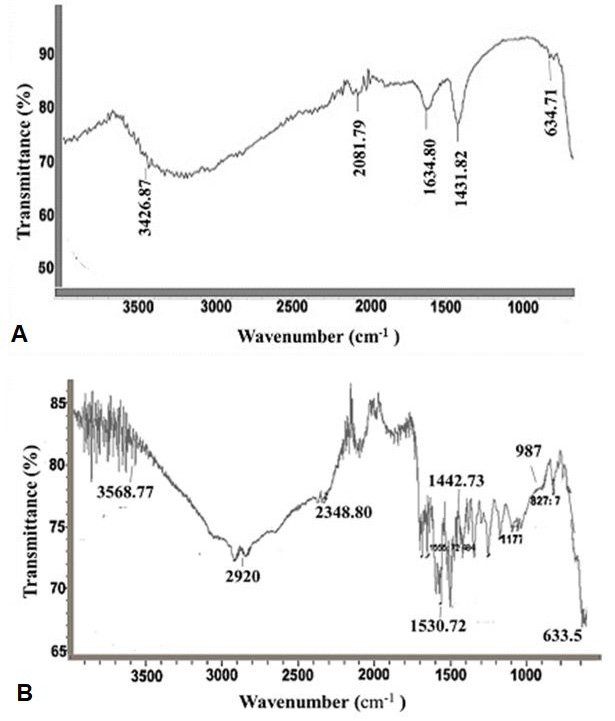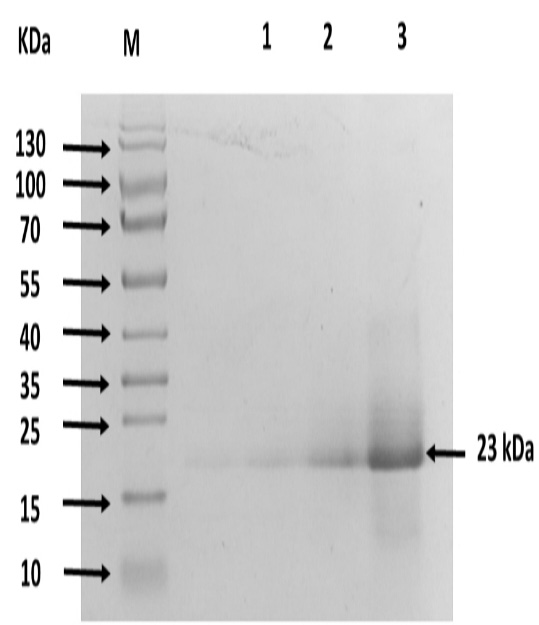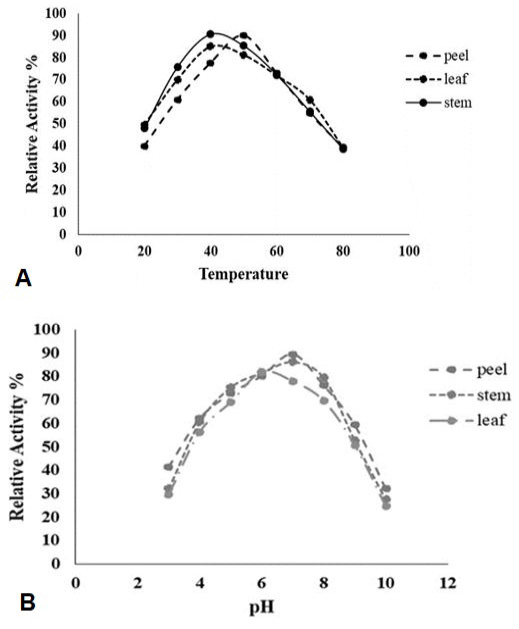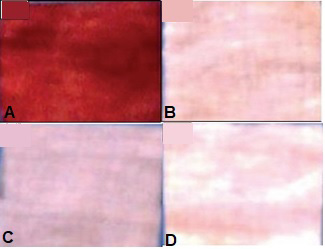Purification and Characterization of Bromelain from Waste Parts of Ananas comosus for its Application in Detergent Industry
Purification and Characterization of Bromelain from Waste Parts of Ananas comosus for its Application in Detergent Industry
Fariha Javaid1*, Zahoor Qadir Samra1, Madeeha Shahzad Lodhi1,2, Aroosha Hussain1 and Gulnaz Pervaiz1
A, FTIR spectrum of magnetic nanoparticles (MNPs). A peak at 634.71 cm-1 is due to Fe-O bond vibrations confirming MNPs synthesis. For OH groups, a peak is observed at 1634.80 cm-1. B, FTIR spectrum of conjugated ARG-MNPs. FeO peak (633.5 cm-1), N=C peak (2348.8 cm-1), and the overlapping peak of OH-NH (3568.7 cm-1) confirm successful conjugation of arginine with MNPs.
12% SDS PAGE indicating 23 kDa band of affinity purified BRM enzyme. Lane M; Prestained protein ladder (Pageruler 10-180 kDa). Lane 1; Leaf BRM. Lane 2; Peel BRM, Lane 3; Stem BRM.
Optimum temperature (A) and pH (B) for peel, crown leaf, and stem BRM. Stem and peel BRM showed maximum activity 40 oC and at pH 7. Peel BRM exhibited maximum activity at 50 oC. Leaf BRM showed the highest activity at pH 6.
Blood stains removed by affinity-purified stem BRM and detergent. Control showing cotton fabric stained with goat blood (A). Treated with BRM enzyme only (B). Treated with detergent only (C). Treated with BRM and detergent (D).













